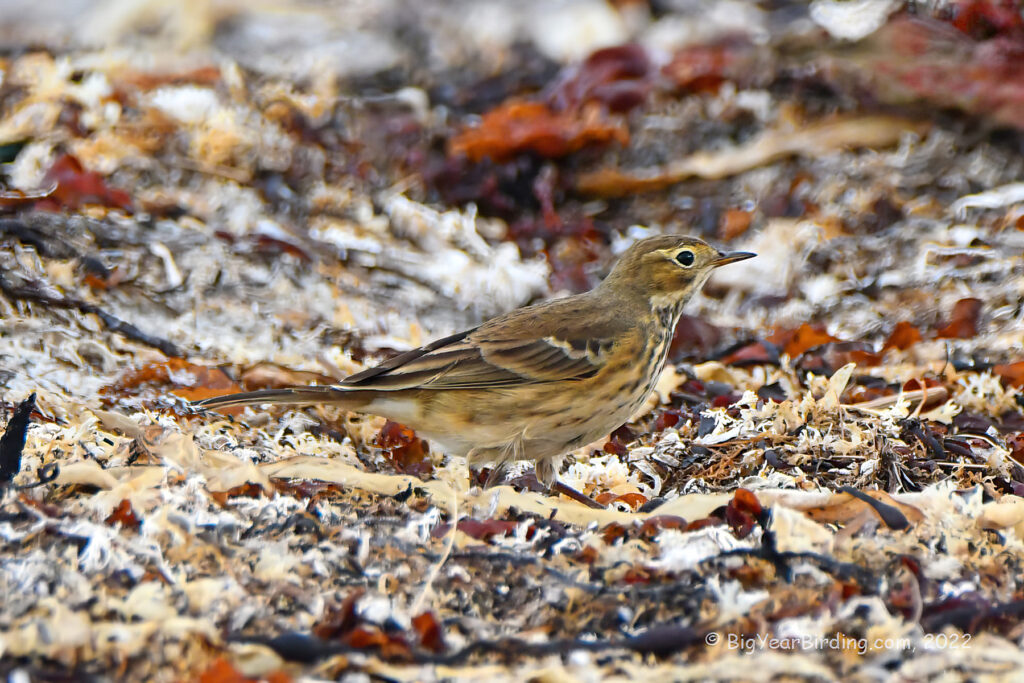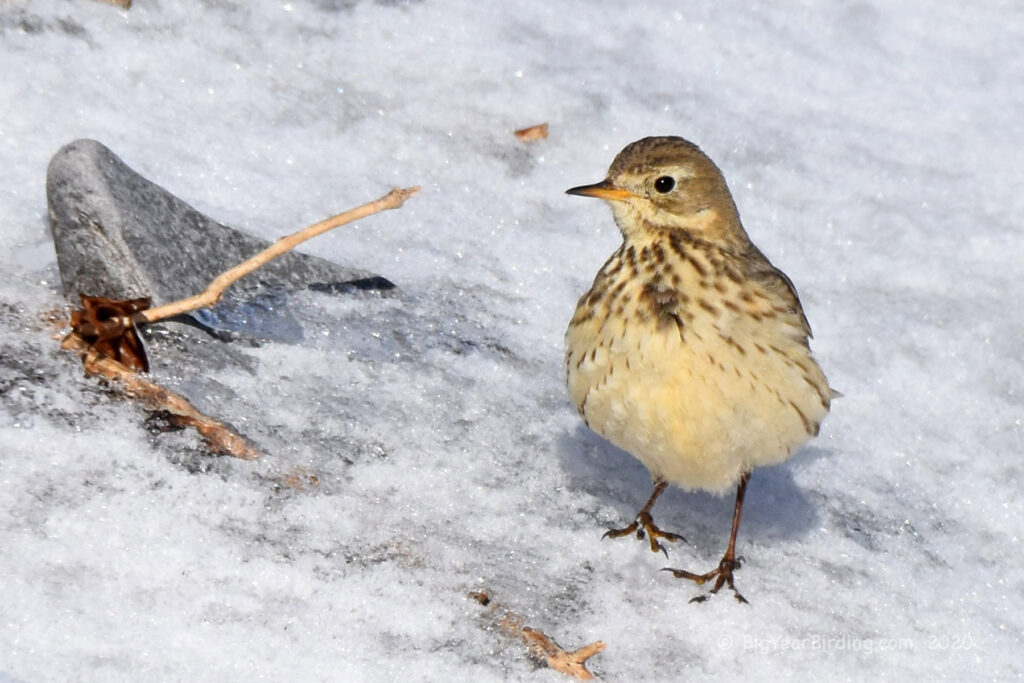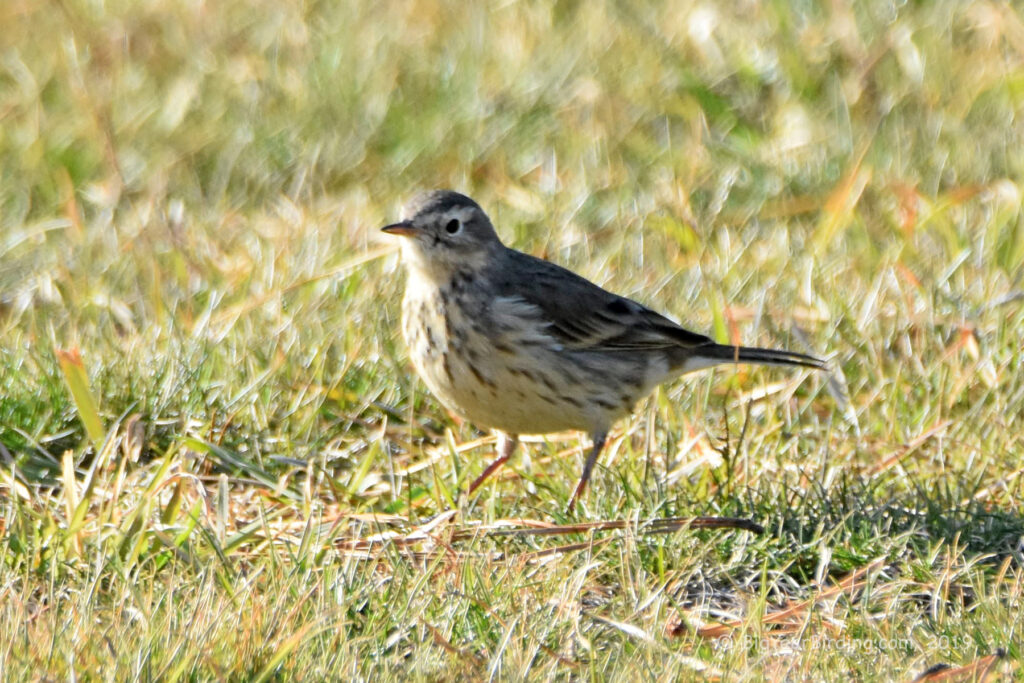
The American Pipit, also known as the Buff-bellied Pipit, is a small bird that belongs to the family Motacillidae. It has a slender body that measures around 6.5 inches in length and weighs between 0.7-1.1 ounces. This bird has a pale brown back, buff-colored underparts, and a thin bill, which distinguishes it from other similar-looking species.

One of the distinguishing field marks of the American Pipit is its tail. It has a long, thin tail that is often seen bobbing up and down as the bird walks or runs on the ground. Additionally, it has a thin white stripe over the eye that contrasts with its brown head, making it easy to spot in the field. The American Pipit’s call is a high-pitched, metallic “tsweeet” sound.
The American Pipit is a migratory bird that breeds in the Arctic tundra and alpine regions of North America. During the breeding season, it can be found in Alaska and northern Canada. In the fall, it migrates southward to spend the winter in the southern United States, Mexico, Central America, and the Caribbean. In some years, the American Pipit can be found in large numbers on the West Coast of the United States, where it is known to roost in flocks on beaches.
The American Pipit is often found in open fields, grasslands, and wetlands. It feeds on insects and other small invertebrates, as well as seeds and berries. This bird is often seen walking or running on the ground, stopping occasionally to pick up food. It can also be seen perched on fence posts or low bushes.

In conclusion, the American Pipit is a small, slender bird with a distinctive bobbing tail and a thin white stripe over the eye. It measures around 6.5 inches in length and weighs between 0.7-1.1 ounces. This bird breeds in the Arctic tundra and alpine regions of North America and migrates southward for the winter. It can be found in open fields, grasslands, and wetlands, where it feeds on insects, seeds, and berries.

